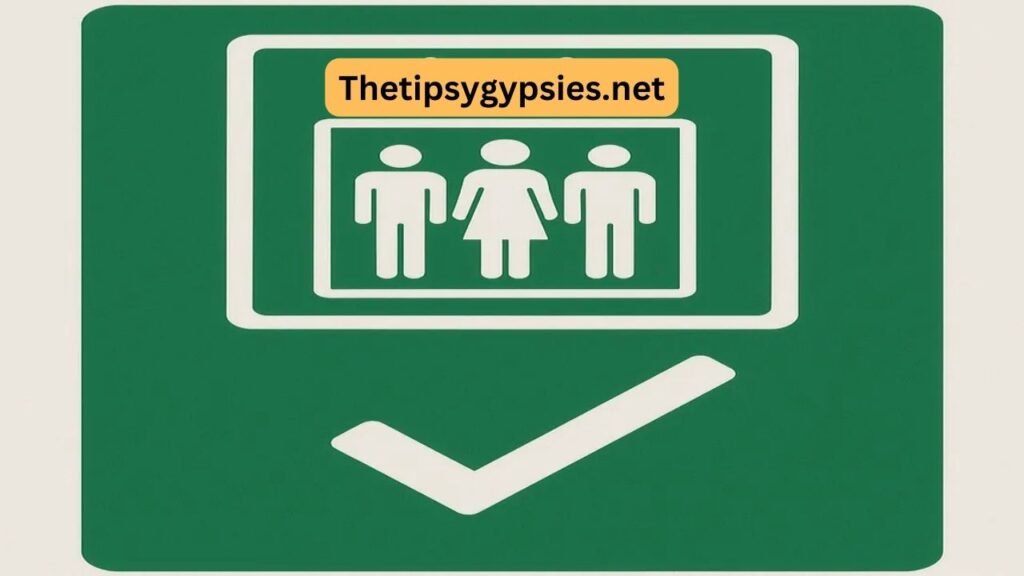In modern buildings and workplaces, lifts are essential for convenience, accessibility, and efficiency. However, safety always comes first. The statement “this sign shows when a lift is safe to use” is more than just a reminder—it’s a critical assurance that the lift has passed safety checks and is ready for operation. Without such signs, people risk using lifts that may be faulty or dangerous.
This guide explains what the phrase means, why these signs matter, how they’re used in various industries, and what regulations support them.
What Does “This Sign Shows When a Lift Is Safe to Use” Indicate?
The phrase “this sign shows when a lift is safe to use” usually appears near lift entrances or control panels. It informs passengers and operators that the lift is:
Inspected and in working condition.
Free from hazards such as broken doors or faulty wiring.
Safe to carry the specified weight limit.
Equipped with functioning emergency systems.
In short, the sign reassures users that the lift has been approved for safe operation.
Why Are Lift Safety Signs So Important?
Displaying “this sign shows when a lift is safe to use” has several important benefits:
Protects Lives – Prevents passengers from entering faulty lifts.
Ensures Compliance – Many safety authorities mandate clear signage.
Reduces Liability – Businesses avoid lawsuits by proving safety checks are performed.
Builds Confidence – Visitors and employees feel safer using the lift.
Places Where This Sign Is Commonly Seen
You can find “this sign shows when a lift is safe to use” in a variety of environments:
Construction Sites – Where lifts transport heavy materials.
Hospitals – Patient lifts need constant verification for safety.
Shopping Centres & Offices – Public lifts require regular inspection.
Factories – Freight lifts used for moving goods are checked daily.
Residential Buildings – Safety signs reassure residents and guests.
Types of Lift Safety Indicators
The message “this sign shows when a lift is safe to use” can be displayed in different formats:
Inspection Certificates – Paper or digital documents placed near lifts.
LED Safety Displays – Modern lifts show safety status automatically.
Color-Coded Tags – Green tags mean safe, red means unsafe.
Warning Posters – Informative signs explaining safety rules.
Legal and Regulatory Requirements
Most countries require lift owners to comply with safety regulations. Displaying “this sign shows when a lift is safe to use” is often part of these requirements. Typical rules include:
Periodic Inspections – Lifts must be checked monthly, quarterly, or annually.
Maintenance Records – Proof of inspections must be available for users.
Clear Signage – Notices must be visible and easy to understand.
Emergency Protocols – In case of faults, lifts must display warnings.
Failing to follow these regulations can lead to accidents, legal penalties, and financial loss.
Why Businesses Should Use Safety Signs Consistently
For businesses, posting “this sign shows when a lift is safe to use” is a simple yet powerful practice. It demonstrates responsibility, protects customers, and strengthens reputation. Some key advantages include:
Reduced Risk – Prevents unauthorized or unsafe lift use.
Customer Trust – Visitors know safety is prioritized.
Operational Efficiency – Lifts remain available only when safe.
How to Ensure the Sign Reflects True Safety
To make sure “this sign shows when a lift is safe to use” is accurate, companies must:
Carry out routine inspections.
Train staff to recognize potential issues.
Document all checks and repairs.
Update signage immediately after inspections.
This way, the message always reflects the lift’s real condition.
Role of Technology in Lift Safety
Technology is making lift safety more reliable. Instead of relying only on paper signs, many buildings now use:
Smart Sensors – Detect overloads or malfunctions instantly.
Automated Alerts – Notify management when maintenance is required.
Digital Displays – Update in real time to show whether a lift is safe.
With such systems, “this sign shows when a lift is safe to use” becomes a live safety indicator, not just a static notice.
Risks of Missing or Outdated Safety Signs
If “this sign shows when a lift is safe to use” is absent, outdated, or ignored, several problems may occur:
People may unknowingly use unsafe lifts.
Businesses may face legal action after accidents.
Trust in the building’s safety standards decreases.
Therefore, it is essential to keep the signage updated and visible at all times.
Best Practices for Using Lift Safety Signs
To maximize effectiveness, organizations should follow these best practices when displaying “this sign shows when a lift is safe to use”:
Place signs at eye level near every lift entrance.
Use clear, bold text with safety colors (green for safe, red for unsafe).
Include inspection dates and contact details of inspectors.
Replace or update signs after every safety check.
Ensure signs are visible even during emergencies.
Conclusion
The phrase “this sign shows when to use” is much more than a simple notice—it’s a life-saving message. It communicates trust, compliance, and responsibility while ensuring that passengers and operators can confidently use lifts without fear of malfunction.
By combining regular inspections, modern technology, and clear signage, businesses and property managers can maintain safe lift operations and protect everyone who relies on them.






